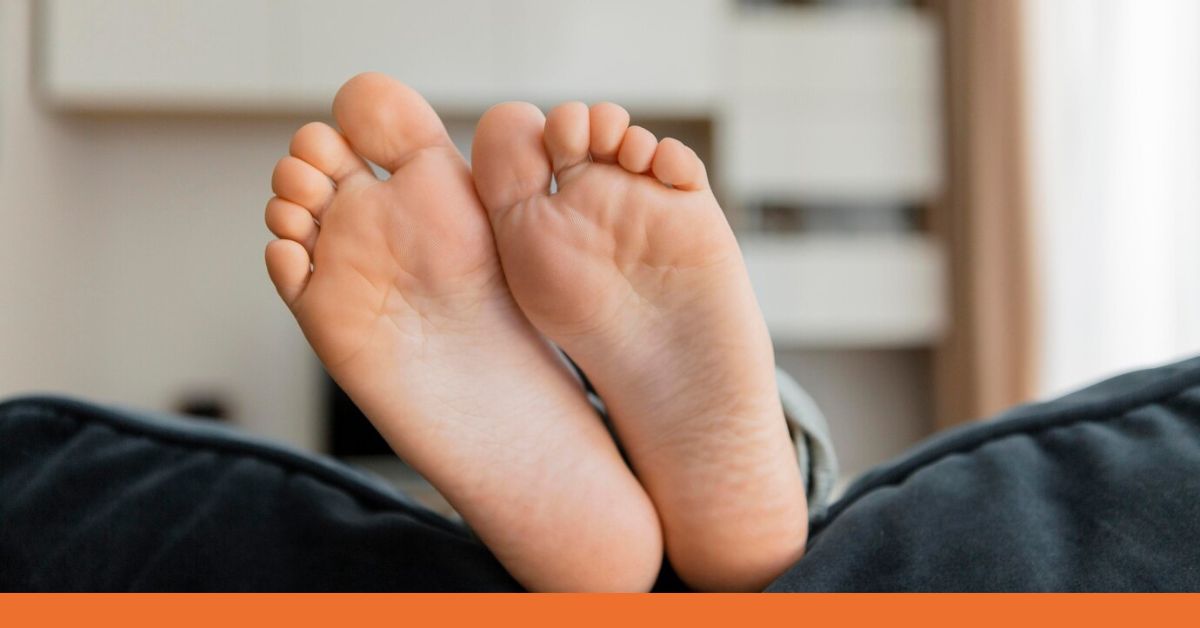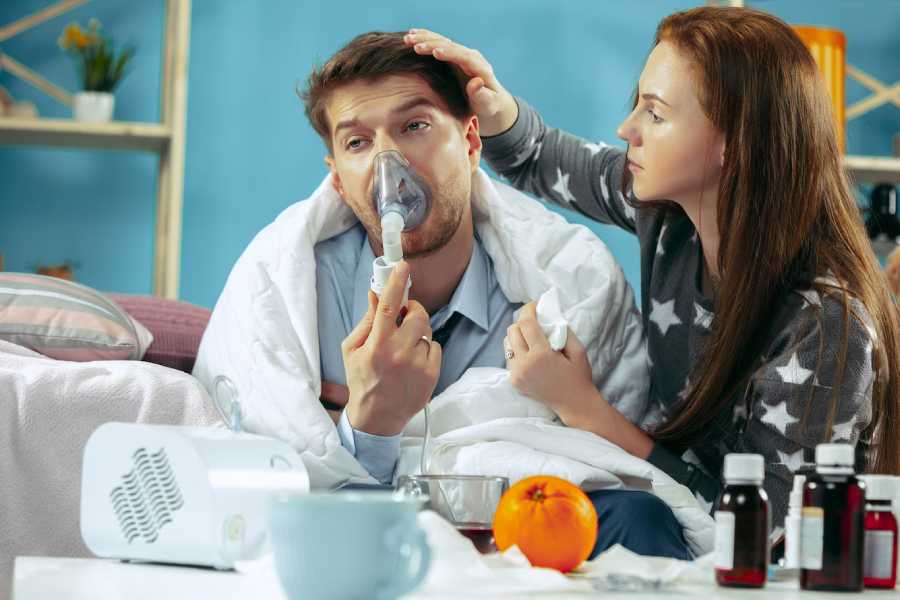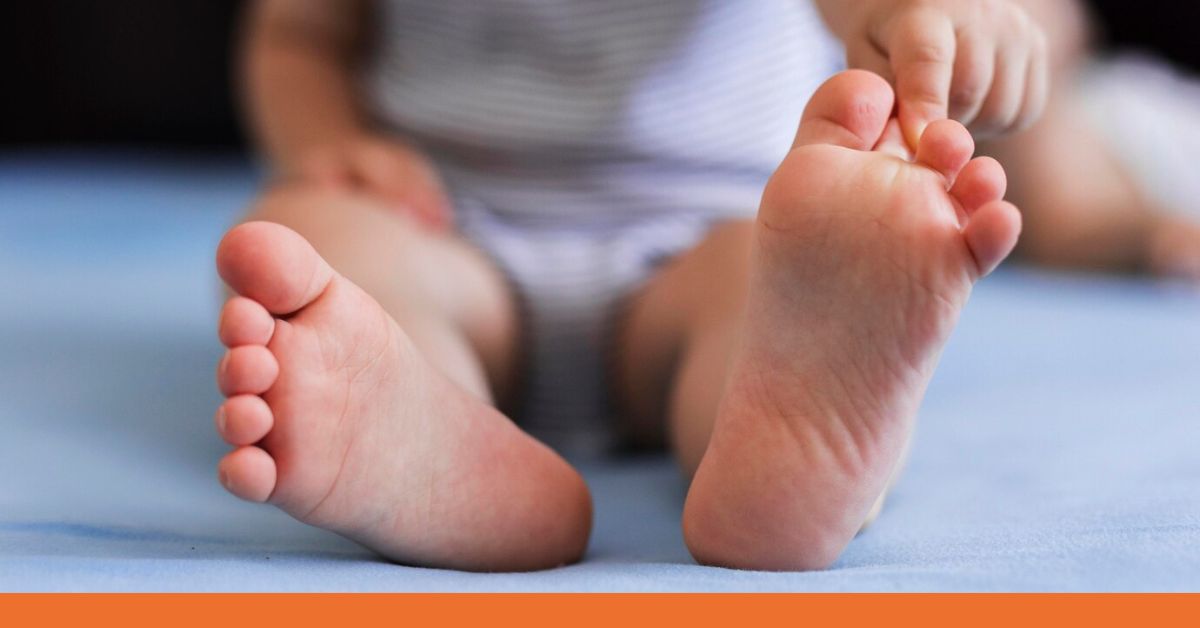
Athlete’s foot, medically known as tinea pedis, is a common fungal infection that affects the skin on the feet. It can cause a range of symptoms, from itching and burning to peeling and blisters. Understanding the signs and symptoms can help you determine if you have this condition and when you might need to seek urgent care in Bridgeport, CT.

✔Athlete’s foot is a contagious fungal infection primarily affecting the skin on the feet, often contracted from damp communal areas or through direct contact with an infected person.
✔ Common symptoms include itching, burning, redness, and peeling skin, especially between the toes, which can escalate to blisters or open sores if left untreated at an urgent care in Bridgeport, CT.
✔ Factors such as frequenting damp public places, poor foot hygiene, and certain health conditions can increase susceptibility to the infection, making preventive measures crucial for those at higher risk.
✔ Seek professional care at an urgent care in Bridgeport, CT, if symptoms persist beyond two weeks, become severe, or if other health conditions complicate the infection, as timely intervention can prevent further complications.
Athlete’s foot, known medically as tinea pedis, is more than an inconvenience for those suffering from it. This fungal infection, which primarily affects the feet, has been a cause of discomfort for countless individuals. But what exactly is athlete’s foot, and why should Bridgeport, CT residents be informed about it? Let’s explore this condition in detail.
Athlete’s foot is caused by a group of fungi called dermatophytes. These fungi thrive in warm, moist environments, making the spaces between our toes an ideal breeding ground. The name “athlete’s foot” might suggest that only athletes can get this infection, but that’s far from the truth. The condition got its name due to the fungus being frequently present in areas frequented by athletes, such as locker rooms and swimming pools. However, anyone can contract it, particularly if they walk barefoot in public places or share shoes and socks with an infected person.
The contagious nature of athlete’s foot cannot be stressed enough. The fungi responsible for this condition can easily spread from one person to another through direct contact. Moreover, if an infected person walks on a surface, the fungi can linger there, waiting for the next unsuspecting victim. This is why wearing protective footwear in public showers, locker rooms, and pools is crucial, especially in communal spaces in Bridgeport, CT. If you suspect you have athlete’s foot and have been to a public place, it might be wise to seek urgent care in Bridgeport, CT, to prevent further spread.
Athlete’s foot, while common, presents a range of symptoms that can vary in intensity and appearance. Recognizing these symptoms is the first step toward effective treatment and management. Understanding these signs is crucial for residents of Bridgeport, CT, especially when determining the right time to seek urgent care in Bridgeport, CT.
For many, athlete’s foot begins with a slight itch, especially between the toes. This itching can be mild at first but tends to intensify, especially after removing shoes and socks. The discomfort can escalate to a burning or stinging sensation, making even the simple act of walking a challenge.
As the infection progresses, several visible changes can occur. Get checked at a reputable urgent care center in Bridgeport, CT, like DOCS Urgent Care & Primary Care – Bridgeport, when these signs occur:
If athlete’s foot is left untreated at an urgent care in Bridgeport, CT, the symptoms can evolve into more severe complications:
Several factors can influence the intensity and type of symptoms:
Athlete’s foot, while a common ailment, doesn’t affect everyone equally. Certain behaviors and conditions can increase an individual’s susceptibility to this fungal infection. Understanding these risk factors is essential for the residents of Bridgeport, CT, not just for prevention. It’s also to determine when it might be necessary to visit trusted urgent care centers in Bridgeport, CT, like DOCS Urgent Care & Primary Care – Bridgeport, to get checked.
Athlete’s foot, while often considered a minor ailment, can sometimes escalate into a more severe condition requiring professional medical attention. For residents of Bridgeport, CT, recognizing when to make that crucial decision to visit expert urgent care centers in Bridgeport, CT, like DOCS Urgent Care & Primary Care – Bridgeport, can make all the difference in ensuring a swift and effective recovery.
One of the primary reasons to consider seeking medical attention at an urgent care in Bridgeport, CT, is the persistence of symptoms. If you’ve been applying over-the-counter antifungal creams or trying home remedies for over two weeks and see no improvement, it’s a clear sign that you need professional intervention. The fungi causing the infection might be resistant to common treatments, or an underlying condition could exacerbate the symptoms.
While itching and mild redness are common symptoms of athlete’s foot, there are more severe manifestations that warrant a visit to an urgent care in Bridgeport, CT:
Certain health conditions can complicate athlete’s foot:
If you’ve had an athlete’s foot in the past and it keeps coming back, seeking professional advice is essential. Recurring infections can indicate an underlying issue or a particularly resilient strain of fungi. An urgent care in Bridgeport, CT, can provide a comprehensive examination, recommend tests, and prescribe stronger antifungal medications.
Sometimes, over-the-counter treatments might not be potent enough to combat the infection. If you’ve tried multiple treatments with no success, it’s time to consider stronger prescription medications available at reliable facilities like DOCS Urgent Care & Primary Care – Bridgeport.
Lastly, sometimes it’s just about peace of mind. If you’re unsure whether you have an athlete’s foot or another skin condition or are worried about the symptoms you’re experiencing, it’s always a good idea to consult a professional. An urgent care in Bridgeport, CT, can provide a definitive diagnosis and guide you on the best action.

Athlete’s foot has distinct symptoms like itching, burning, and peeling skin, especially between the toes. However, other conditions like eczema or psoriasis can have similar symptoms. It’s essential to note the specific areas affected and any potential exposure to fungi. If in doubt, a visit to an urgent care in Bridgeport, CT, can provide a definitive diagnosis.
Yes, certain diets can help alleviate abdominal pain, depending on the underlying cause. For instance, a low-FODMAP diet can benefit those with IBS, while a gluten-free diet is essential for individuals with celiac disease. It’s crucial to consult with a primary care doctor in Bridgeport, CT, or a nutritionist to tailor a diet specific to your needs and condition.
Yes, children can contract athlete’s foot, although it’s more common in adults. Kids who use communal showers, like in schools or public pools, are at risk. Parents must teach their children about foot hygiene and regularly check their feet for signs of infection. Consider consulting a pediatrician or an urgent care in Bridgeport, CT if symptoms appear.
While athlete’s foot itself isn’t harmful to a pregnancy, some medications might be. Pregnant women need to consult a healthcare professional before starting any treatment. Many over-the-counter antifungal creams are safe, but it’s always best to get a recommendation from a doctor or an urgent care in Bridgeport, CT.
If you’ve been using over-the-counter treatments consistently for two weeks with no improvement, it’s time to seek professional advice. Additionally, if the symptoms worsen suddenly or if you develop other complications, don’t delay. An urgent care in Bridgeport, CT, can guide the next steps and prescribe stronger treatments if necessary.
Yes, by practicing good foot hygiene, you can reduce the risk of recurrence. This includes thoroughly drying your feet after washing, wearing breathable shoes, and avoiding walking barefoot in communal areas. Regularly changing socks and using antifungal powders can also help. If you’re prone to repeated infections, consider discussing preventive strategies with a professional at an urgent care in Bridgeport, CT.
Yes, some home remedies can provide relief from athlete’s foot symptoms. Soaking the feet in water and apple cider vinegar or using tea tree oil can help combat the fungi. However, while these remedies can alleviate symptoms, they might not cure the infection entirely. For persistent or severe cases, it’s best to consult an urgent care in Bridgeport, CT, for appropriate treatment.
Absolutely, the fungi responsible for athlete’s foot can spread to other areas, especially if you touch the infected foot and then touch another body part. Common areas include the hands, underarms, and groin (leading to jock itch). Practicing good hygiene, avoiding scratching the infected area, and washing hands frequently is essential. If you notice the infection spreading, consider seeking advice from an urgent care in Bridgeport, CT
While athlete’s foot presents with itching, redness, and peeling, other conditions like contact dermatitis or dyshidrotic eczema can have overlapping symptoms. Observing the specific areas affected, the pattern of symptoms, and potential exposure to fungi can provide clues. However, it’s best to consult a professional at an urgent care in Bridgeport, CT for an accurate diagnosis.
If you’re battling the relentless itch of athlete’s foot or are concerned about any foot-related symptoms, don’t let it hold you back any longer. Your path to relief is just a step away. At DOCS Urgent Care & Primary Care – Bridgeport, our dedicated professionals are ready to assist, providing top-notch care tailored to your needs. Contact us today!


During this surge in COVID-19 cases, our primary focus is meeting the high demand for tests, and we are seeing higher than usual wait times. This means we are unable to answer most phone calls. Please know that our teams are working very hard during this time to care for as many patients as safely as possible. Please click the button below for answers to common questions. We appreciate your understanding.